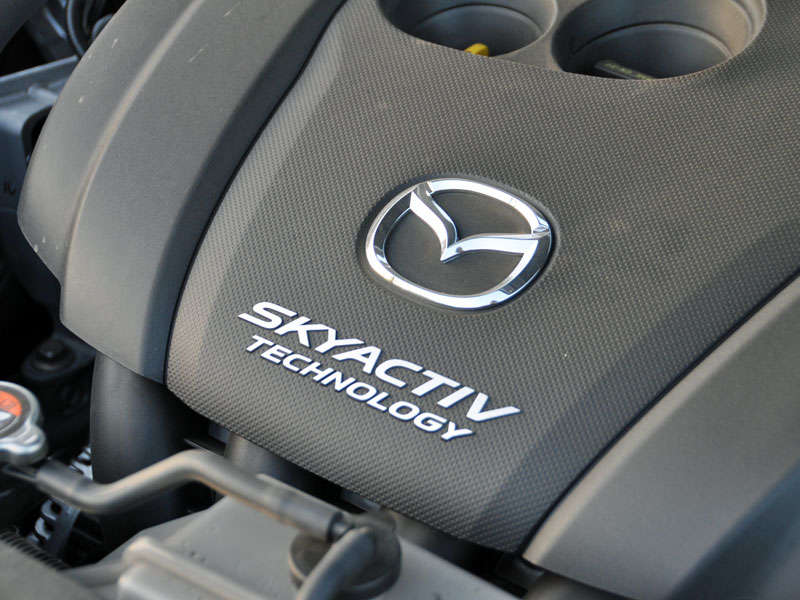Recent Articles
Popular Makes
Body Types
What are Mazda SKYACTIV Engines?

Mazda's SKYACTIV engines are a series of highly-efficient internal combustion engines. Mazda makes both gasoline (SKYACTIV-G) and diesel (SKYACTIV-D) versions of the engine. The gasoline versions use compression ratios between 13:1 and 14:1, the highest of any gasoline engine, and much higher than normal engines that are usually in the 10:1 to 12:1 range. As the compression ratio increases, the thermal efficiency of the engine goes up; however, so does the chance of engine knock. Engine knock is caused by the air-fuel mixture being pre-ignited by the combination of high-temperature hot spots and high pressures in the combustion chamber. To reduce the chance of knock, Mazda uses a special long 4-2-1 exhaust manifold to reduce the amount of hot exhaust gas remaining in the combustion chamber. The SKYACTIV-G engine also uses a short combustion duration, meaning that the unburned fuel spends less time exposed to high temperatures, lowering the chance of knock. The engines use high-pressure direct injection and multi-hole injectors to ensure that the fuel is delivered as efficiently as possible, and the pistons have cavities in them to ensure that they do not interfere with the combustion flame.
Interestingly, the diesel engines also use a compression ratio of 14:1, the lowest of any diesel engine. These engines are up to 20 percent more efficient than diesel engines with higher compression ratios, and they can pass emissions without the use of expensive after-treatment systems. By lowering the compression ratio, the temperatures and pressures in the combustion chamber are also lowered, resulting in better air and fuel mixture, fewer NOx emissions, less soot, and allowing optimal timing. The lower pressures also allow the SKYACTIV-D to use a lighter block, saving weight. The engines also use a two-stage turbocharger, allowing the engine to deliver optimal torque from low engine speeds all the way up to the 5200 RPM redline.
